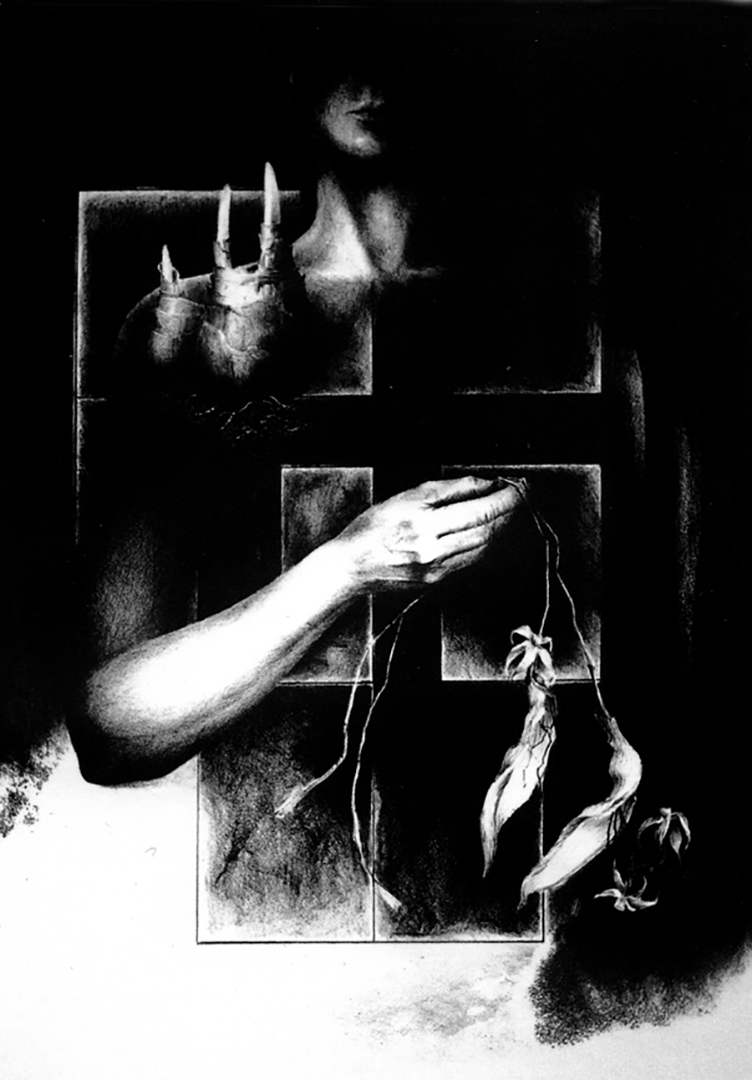Lithography
Lithography (stone writing), developed in the 1790’s, relies upon the antipathy between grease and water. Flat slabs of limestone from a (now empty) quarry in Bavaria are exclusively used for stone lithography. The surface of the stone is ground with grit (coarse to fine) to create a smooth surface on which to make the image. The image is created using lithographic pencils, crayons and washes – all of which combine grease and black ink. This range of drawing/painting materials enable a wide variety of marks to be made on the stone. The process of drawing deposits greasy marks on the stone. When the stone is to be printed, water is sponged over the surface, and a roller charged with (greasy) ink is rolled over the stone. Where there are the marks of the image, the ink stays on the stone, where there are no marks, water repells the ink. Damp paper is placed on the stone, and is passed through the press, transferring the ink to paper.
Click an image to see in more detail



